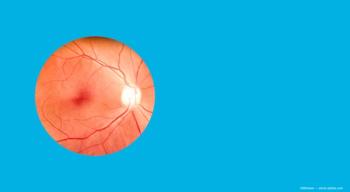
Vitrectomy cutter offers high-speed cutting, control of duty cycle
A new surgical platform (Constellation Vision System, Alcon Laboratories) incorporates advanced design features for improved surgical efficiency and safety. Vitrectomy probes (Ultravit, Alcon) facilitate high-speed cutting and control of the duty cycle.
Key Points
Existing pneumatic guillotine vitrectomy cutters, he said, have a pneumatic drive pulse that acts on an elastic diaphragm, which, in turn, pushes the cutter against a return spring that closes the port. The mechanism creates a shearing action to dissect vitreous that enters the port during aspiration, according to Dr. Kaiser, a vitreoretinal surgeon at the Cole Eye Institute, Cleveland Clinic, Cleveland.
With venting of the pneumatic pulse, the diaphragm is pushed back by the return spring, and the cutter port opens. The cut rate of the pneumatic cutters is determined by the repetition of the drive sequence and is limited by the drive pulse rising edge, the venting of the pressure pulse, and the characteristics of the mechanical spring. The duty cycle is controlled by the pulse and spring.
High-speed probe
The new high-speed vitrectromy probe, in contrast, is an advanced pneumatic dual-drive guillotine cutter that is available in 20-, 23-, and 25-gauge models. The cutter can attain higher cut rates (i.e., 5,000 cuts per minute [cpm]) compared with standard probes, he said.
Similarities and differences exist between the probe and standard instruments. In both types, the guillotine cutters are closed by a pneumatic drive pulse that acts on a diaphragm. Unlike the return spring in a standard probe, however, a secondary drive pulse in the new probe acts on the diaphragm in the opposite direction to reopen the cutter.
Control of duty cycle
"The dual-acting drive can deliver much higher cut rates and allows for control of the duty cycle," Dr. Kaiser explained.
As the cut rate increases in the probe, the volume of vitreous that enters the port decreases. He provided an example with a constant flow rate of 8 ml per minute. At 1,500 cpm, the aspirate volume is 5.3 μl per cut, that is, 8 μl per 1,500. At 5,000 cpm, that volume decreases to 1.6 μl per cut or 8 μl per 5,000.
The duty cycle determines how long the cutter port is open as a percentage of the total cut cycle time. The duty cycle in the probe is controlled by adjusting the pneumatic drive pulses hold the port open longer or closed longer. In electric cutters, the duty cycle is fixed at 50% because the cutter transition is related directly to the reciprocating action of the electric motor, Dr. Kaiser said.
The surgical platform incorporates three duty cycle settings that can be controlled by the surgeon:
"The new . . . platform allows surgeons to select the duty cycle, which makes it truly possible to shave the vitreous at ultra-high cut rates," he said. "The . . . cutter with its improved design offers dramatically faster cut speeds compared with the current technology and allows for duty cycle control.
"The combination of increased cut speed and duty control offers surgeons more precise, controlled, and efficient vitrectomies," Dr. Kaiser concluded.
Newsletter
Don’t miss out—get Ophthalmology Times updates on the latest clinical advancements and expert interviews, straight to your inbox.


















































.png)


